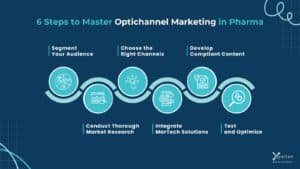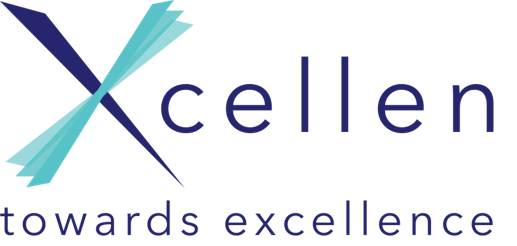Introduction
Optichannel marketing has emerged as a resourceful strategy, particularly for industries as dynamic and regulated as pharmaceuticals. By focusing on delivering the right message to the right audience through the most effective channel at the right time, Optichannel marketing can enhance commercial excellence and drive sales force effectiveness.
Unlike multichannel or omnichannel marketing, which aim for broader channel usage or unified messaging, respectively, Optichannel marketing is rooted in precision and adaptability. This approach harnesses data and insights to prioritize the channels that work best for specific audiences. In the highly competitive pharma industry, where compliance and engagement go hand-in-hand, this strategy stands out as a game-changer.
Pharma companies face increasing challenges in connecting with healthcare providers (HCPs), patients, and payers due to regulatory constraints, diverse demographics, and the rising demand for personalized care. Optichannel marketing offers a solution by seamlessly integrating digital and traditional marketing methods, ensuring both compliance and impact
What is Optichannel Marketing
The Basics of Optichannel Marketing
Optichannel marketing focuses on leveraging data to determine the most effective communication channels for reaching target audiences. This is particularly important in the pharma industry, where audience segments include HCPs, patients, and payers—each with distinct needs and preferences. By prioritizing the most impactful channels, pharma companies can deliver personalized experiences, enhance engagement, and maintain compliance.
Key Differences Between Multichannel, Omnichannel, and Optichannel Strategies
Multichannel Marketing: This approach involves using multiple channels to distribute messages. However, it lacks integration, leading to fragmented experiences for the audience.
Omnichannel Marketing: Omnichannel strategies focus on creating a seamless experience across channels. While effective, they can be resource-intensive and may not prioritize the most impactful channels for specific audience segments.
Optichannel Marketing: This approach combines the best of both worlds by using data to identify and focus on the most effective channels for each audience segment. It ensures optimal resource allocation and maximized engagement, making it ideal for the pharma sector
Why is it the key to commercial excellence in the pharma sector?
1. Regulatory Complexities: Optichannel marketing helps navigate strict regulatory requirements by ensuring consistent and compliant messaging.
2. Diverse Target Audiences: From HCPs and patients to payers, the pharma industry interacts with varied groups. An Optichannel approach ensures tailored
communication for each segment.
3. Demand for Personalization: Patients and HCPs increasingly expect personalized and relevant information. Optichannel strategies make this possible by leveraging data insights.
Benefits of Optichannel Marketing in the Pharma Industry
Enhanced Patient and HCP Engagement
Optichannel marketing enables pharma companies to connect meaningfully with both patients and healthcare providers. By identifying the preferred channels for each audience, such as social media for patients or professional portals for HCPs, marketers can deliver targeted, relevant, and timely messages.
● Personalized Communication for HCPs: Doctors and medical professionals value information that is directly relevant to their field. Optichannel strategies ensure that HCPs receive updates, research data, and product information through their preferred channels, whether it’s email newsletters, webinars, or dedicated online platforms.
● Improved Patient Adherence: For patients, Optichannel marketing supports education about medication adherence, lifestyle changes, and support programs. For instance, tailored SMS reminders or app notifications can encourage patients to stay on track with their treatments
Increased ROI
Optichannel marketing’s data-driven approach ensures that marketing resources are allocated to the most effective channels, reducing waste and increasing return on investment (ROI). By focusing on high-impact touchpoints, pharma companies can:
● Reduce costs associated with less effective campaigns.
● Achieve higher engagement rates through targeted messaging.
● Increase conversions by addressing the specific needs of HCPs and patients.
Compliance and Brand Consistency
One of the significant challenges in pharma marketing is adhering to strict regulatory requirements while maintaining a consistent brand image. Optichannel marketing helps address these concerns by:
● Ensuring Compliance: Automated tools and analytics can monitor campaigns to ensure they meet regulatory standards across different regions and platforms.
● Unified Messaging: With an Optichannel approach, all communication—from digital ads to printed brochures—aligns with the brand’s core messaging, enhancing trust and credibility.
Real-World Applications in Pharma
● Promoting New Drugs: Pharma companies can use Optichannel marketing to launch new medications by targeting HCPs through professional platforms and patients via educational campaigns on social media.
● Educational Webinars: Hosting virtual events tailored for HCPs can help disseminate critical information about new treatments or research findings.
● Patient Support Programs: Personalized outreach through apps or email campaigns can help patients access resources, such as financial assistance or lifestyle tips, improving their overall experience
How to Implement Optichannel Marketing in Pharma
Steps to Build an Optichannel Strategy
Building an Optichannel marketing strategy in the pharma industry requires a structured approach that aligns with both business objectives and compliance standards.
1. Conduct Thorough Market Research: Understand the needs, preferences, and behaviors of your target audiences, including HCPs, patients, and payers.
2. Segment Your Audience: Use data analytics to create detailed audience personas based on demographics, behaviors, and communication preferences.
3. Choose the Right Channels: Identify the most effective platforms for reaching each audience segment, such as professional networks for HCPs or social media for patients.
4. Integrate MarTech Solutions: Utilize marketing technologies like CRM systems, automation tools, and data analytics platforms to streamline campaigns and monitor performance.
5. Develop Compliant Content: Ensure that all materials meet regulatory standards while providing value to the target audience.
6. Test and Optimize: Use A/B testing and feedback loops to refine your approach and maximize engagement

Leveraging Technology for Optichannel Success
Technology plays a pivotal role in the success of Optichannel marketing campaigns in the pharma sector:
● CRM Platforms: Centralize customer data to provide a 360-degree view of your audience.
● AI and Machine Learning: Predict audience behaviors and personalize messaging at scale.
● Analytics Tools: Monitor campaign performance and make data-driven adjustments in real time
Addressing Challenges in Implementation
Despite its benefits, implementing Optichannel marketing in the pharma industry comes with challenges:
1. Data Privacy Concerns: Ensure compliance with data protection regulations, such as GDPR and HIPAA, to safeguard patient and HCP information.
2. Balancing Personalization with Compliance: Navigate the fine line between creating tailored experiences and adhering to regulatory standards.
3. Internal Alignment: Foster collaboration between marketing, sales, and compliance teams to ensure a unified approach.
Conclusion
Optichannel marketing is no longer optional for the pharma industry—it’s a necessity for achieving commercial excellence and staying competitive. Focusing on precision, compliance, and engagement ensures impactful communication with HCPs.
Embracing emerging trends and leveraging cutting-edge technology will further enhance the effectiveness of Optichannel strategies. As the industry evolves, pharma companies that adopt and refine Optichannel marketing will be best positioned to thrive in a complex and highly regulated environment.





